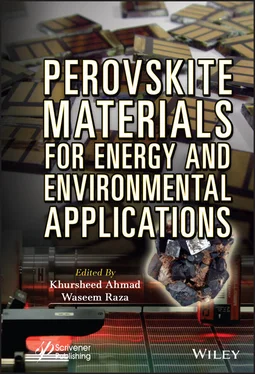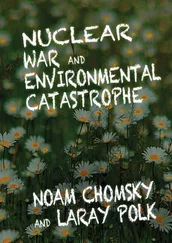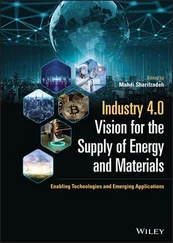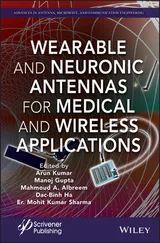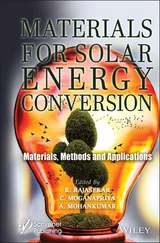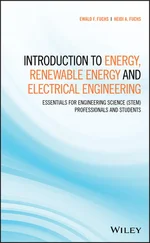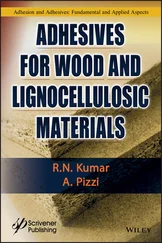Perovskite Materials for Energy and Environmental Applications
Здесь есть возможность читать онлайн «Perovskite Materials for Energy and Environmental Applications» — ознакомительный отрывок электронной книги совершенно бесплатно, а после прочтения отрывка купить полную версию. В некоторых случаях можно слушать аудио, скачать через торрент в формате fb2 и присутствует краткое содержание. Жанр: unrecognised, на английском языке. Описание произведения, (предисловие) а так же отзывы посетителей доступны на портале библиотеки ЛибКат.
- Название:Perovskite Materials for Energy and Environmental Applications
- Автор:
- Жанр:
- Год:неизвестен
- ISBN:нет данных
- Рейтинг книги:5 / 5. Голосов: 1
-
Избранное:Добавить в избранное
- Отзывы:
-
Ваша оценка:
- 100
- 1
- 2
- 3
- 4
- 5
Perovskite Materials for Energy and Environmental Applications: краткое содержание, описание и аннотация
Предлагаем к чтению аннотацию, описание, краткое содержание или предисловие (зависит от того, что написал сам автор книги «Perovskite Materials for Energy and Environmental Applications»). Если вы не нашли необходимую информацию о книге — напишите в комментариях, мы постараемся отыскать её.
The book provides a state-of-the-art summary and discussion about the recent progress in the development and engineering of perovskite solar cells materials along with the future directions it might take.
Audience
Perovskite Materials for Energy and Environmental Applications — читать онлайн ознакомительный отрывок
Ниже представлен текст книги, разбитый по страницам. Система сохранения места последней прочитанной страницы, позволяет с удобством читать онлайн бесплатно книгу «Perovskite Materials for Energy and Environmental Applications», без необходимости каждый раз заново искать на чём Вы остановились. Поставьте закладку, и сможете в любой момент перейти на страницу, на которой закончили чтение.
Интервал:
Закладка:
Perovskite solar cells have enormous potential because of its low manufacturing cost, it has low-energy payback time when compared with other solar cells and high efficiency. The PSC can be made easily and at a very low-cost [32]. Because of this, solar cell can be printed using inkjet printers. Perovskite solar cell can also be used in tandem configuration. In tandem cell configuration with the top layer of perovskite cell and bottom layer of crystalline silicon cell has achieved an efficiency of 29.6% [27].
2.6 Drawbacks and Ongoing Challenges of PSCs
1. Pb-free alternatives/toxicity of Pb
As we know, Pb is highly toxic and harmful to nature and the environment. Lead harms the microorganisms, which are present in the soil; hence, it is a potential threat to the ecosystem. Lead-based PSCs give high light power conversion efficiencies but to prevent the toxicity issues, we have to find alternatives to Pb. We can use tin as it is safe to replace Pb. In 2014, Pb-free perovskite cells were reported. Here, tin was used (MASnI 3) in replacement of Pb, and it achieved power conversion efficiency of 5% to 6% when made with mesoporous TiO 2scaffolds [45, 46]. Cons of tin-based PSCs is that they are not stable in air, and even if they are prepared in an inert environment, they quickly degrade. The main problem is oxidation of tin from +2 to +4 because of self-doping. So the metal which can be stabilized in +2 oxidation state, then that could be used as an alternative to Pb [47].
2. Stability
The power conversion efficiency of PSCs has risen due to considerable amount of research and focus on architectures, compositions, and manufacturing techniques. For commercialization of perovskite cell technology, it should be able to survive at minimum 25 years without degradation in yield in an external environment. In a controlled environment, high-efficiency solar cells are synthesized but when they are exposed to the ambient atmosphere, efficiency drops rapidly. Light absorbers are very fragile/sensitive to water, because of this, solar cells are unstable [38]. The degradation also depends on oxygen, UV radiation, and temperatures.
The rate of degradation of perovskite is very rapid (few minutes) when there is presence of water. The products formed after the degradation of perovskite are CH 3NH 3I and PbI 2. So to increase the lifetime of PSCs it should be kept away from moisture. An HTM with long alkyl chain was used, which would help to prevent water from passing from HTM to perovskite [48]. A carbon material layer of 10 μm thick was used as back contact to retain water. After these arrangements, the stability got increased and power conversion efficiency remained as it is for 1008 hours [49].
The formation of perovskite CH 3NH 3PbI 3film is carried (annealing) at 100°C for 10 minutes [38]. During its annealiation process when the temperature crosses 120°C, the material(CH 3NH 3PbI 3) starts to degrade [50]. When temperature crosses 300°C, the perovskite splits into PbI 2, CH 3NH 2, and HI. Sometimes, TiO 2can also bring instability because it can trap electrons in the crystals as it is nonstoichiometric, and this generally happens in an inert environment. So in seal-packed solar cells, there is a huge problem to avoid perovskite to get oxidized [38]. One solution is to dope TiO 2with aluminium, which can greatly reduce the oxidation [51].
To some extent, the stability of the PSC has increased but it is still far away from long-term use and commercialization. For improving the stability the stability of PSCs, it is necessary to understand the degradation mechanisms and find out the state at which degradation reactions originated or accelerated [52].
2.7 Conclusion
The efficiency of the PSC in the laboratory has reached 23.1%, which is comparable to the single crystalline solar cell. Because of high achievable efficiency, the researchers of different backgrounds of science have contributed in the investigation of PSCs. The higher efficiency of PSCs has been achieved due to high coefficient of absorption and long diffusion lengths. Perovskite solar cell has desired properties, enormous potential, low cost, and high efficiency. Despite achieving high efficiency, there is much difference between the stability of PSCs (1000 hours) and silicon solar cells (20– 25 years). The future challenge is to increase stability. Another drawback is it has toxic material, like Pb, which is very harmful for human beings, as well as the environment. There are some problems that are not solved yet, such as the materials, to increase the scalability, processing of materials, and so on [38].
In total, there are three major concerns, which should be overcome before its commercialization. First, the degradation mechanism should be explored as humidity, heat, and UV light are the main reasons for degradation and brings instability in perovskite. Second, Pb is very harmful to nature, hence it should be replaced with some safer option. Third, PSCs has very high efficiency in small areas of 0.1 cm 2, so this area must be increased such that efficiency and stability remains the same so that we can perform high scale [53]. Researches need to focus and improve on the perovskite and electron-hole transport materials in the future, so that we can use PSCs in place of the conventional solar cell. If these problems are solved, surely perovskite material is projected to have a significant part of the solar cell industry.
Acknowledgment
The authors acknowledge the Chemical Engineering Department of Nirma University for providing the necessary help, infrastructure, and support for the preparation of this chapter/work.
References
1. Snaith, H.J., Perovskites: The emergence of a new era for low-cost, high-efficiency solar cells. J. Phys. Chem. Lett. , 4, 21, 3623–3630, 2013.
2. Mathew, S. et al. , Dye-sensitized solar cells with 13% efficiency achieved through the molecular engineering of porphyrin sensitizers. Nat. Chem. , 6, 3, 242–247, 2014.
3. Kojima, A., Teshima, K., Shirai, Y., Miyasaka, T., Organometal halide perovskites as visible-light sensitizers for photovoltaic cells. J. Am. Chem. Soc , 131, 17, 6050–6051, 2009.
4. Kim, H. et al. , All-Solid-State Submicron Thin Film. Sci. Rep. , 2, 1, 1–7, 2012.
5. Yang, W.S. et al. , High-performance photovoltaic perovskite layers fabricated through intramolecular exchange. Science , 348, 6240, 1234–1237, 2015.
6. Ma, Y. et al. , Recent Research Developments of Perovskite Solar Cells. Chin. J. Chem. , 32, 10, 957–963, 2014.
7. Cheng, Z. and Lin, J., Layered organic-inorganic hybrid perovskites: Structure, optical properties, film preparation, patterning and templating engineering. CrystEngComm , 12, 10, 2646–2662, 2010.
8. Li, X. et al. , Improved performance and stability of perovskite solar cells by crystal crosslinking with alkylphosphonic acid ω-ammonium chlorides. Nat. Chem. , 7, 9, 703–711, 2015.
9. Shi, Y. et al. , CH3NH3PbI3 and CH3NH3PbI3-xClx in planar or mesoporous perovskite solar cells: Comprehensive insight into the dependence of performance on architecture. J. Phys. Chem. C , 119, 28, 15868–15873, 2015.
10. Hussain, I. et al. , Functional materials, device architecture, and flexibility of perovskite solar cell. Emergent Mater. , 1, 3, 133–154, 2018.
11. Marinova, N., Valero, S., Delgado, J.L., Organic and perovskite solar cells: Working principles, materials and interfaces. J. Colloid Interface Sci. , 488, 373–389, 2017.
12. Chen, L.-C. and Tseng, Z.-L., ZnO-Based Electron Transporting Layer for Perovskite Solar Cells, in: Nanostructured Solar Cells . 1, 203–215, 2017
Читать дальшеИнтервал:
Закладка:
Похожие книги на «Perovskite Materials for Energy and Environmental Applications»
Представляем Вашему вниманию похожие книги на «Perovskite Materials for Energy and Environmental Applications» списком для выбора. Мы отобрали схожую по названию и смыслу литературу в надежде предоставить читателям больше вариантов отыскать новые, интересные, ещё непрочитанные произведения.
Обсуждение, отзывы о книге «Perovskite Materials for Energy and Environmental Applications» и просто собственные мнения читателей. Оставьте ваши комментарии, напишите, что Вы думаете о произведении, его смысле или главных героях. Укажите что конкретно понравилось, а что нет, и почему Вы так считаете.
